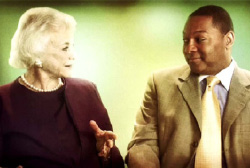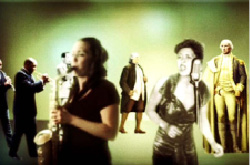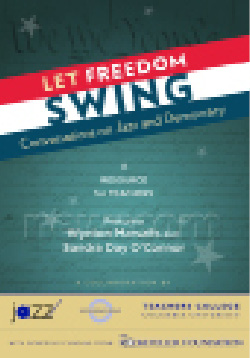Of Democracy and Jazz
A musician and a former Supreme Court justice "Let Freedom Swing" -- a new study guide and Web site for teachers combines the traditional study of American democracy with a focus on the democratic character of jazz.
TC’s Department of Arts and Humanities has launched a new Web site for teachers that explores the relationships between jazz and democracy. “Let Freedom Swing: Conversations on Jazz and Democracy” is a collection of videos and a study guide designed for use in social studies, history and humanities classes. The innovative presentation combines the traditional study of American democracy with a focus on the democratic character of jazz. It may be downloaded for free at http://letfreedomswing.org/.
The program is based on interviews with retired Supreme Court Justice Sandra Day O’Connor and musician and educator Wynton Marsalis. The two came together at The Kennedy Center in 2009 to mark President Obama’s inauguration. Their conversations probe the strong relationships between jazz and democracy, with help from dozens of current musicians, which are presented in three brief but thought-provoking films.
The Rockefeller Foundation sponsored the event, Jazz at Lincoln Center produced it and The Documentary Group created three short films based on it. “We The People” explores the initial connections between democracy and jazz, with a focus on the power of individuals. “E Pluribus Unum” looks at how people balance the interests of individuals and groups, whether in music or politics. “A More Perfect Union” describes how the union of sounds in jazz relates to ongoing efforts to improve the United States through the political process.
TC created study guides for each film. The guides were developed for grades 6–l2, and are relevant to classes exploring politics, history, music or the American character. The classroom resources include links to the films, a full study guide, a list of key concepts, interviewee profiles and links to readings, Web sites and videos. All of the resources conform to suggested standards of the National Council for the Social Studies and the National Association of Music Education.
The study guide contains discussion questions and teaching activities. The Web site contains the three videos, the study guide and information about the project.
Ellen Livingston, TC social studies instructor and author of the study guide, said, “We hope educators will find these materials useful in stimulating student interest in two of America’s greatest creative contributions—jazz and democracy.
Published Monday, Nov. 22, 2010


